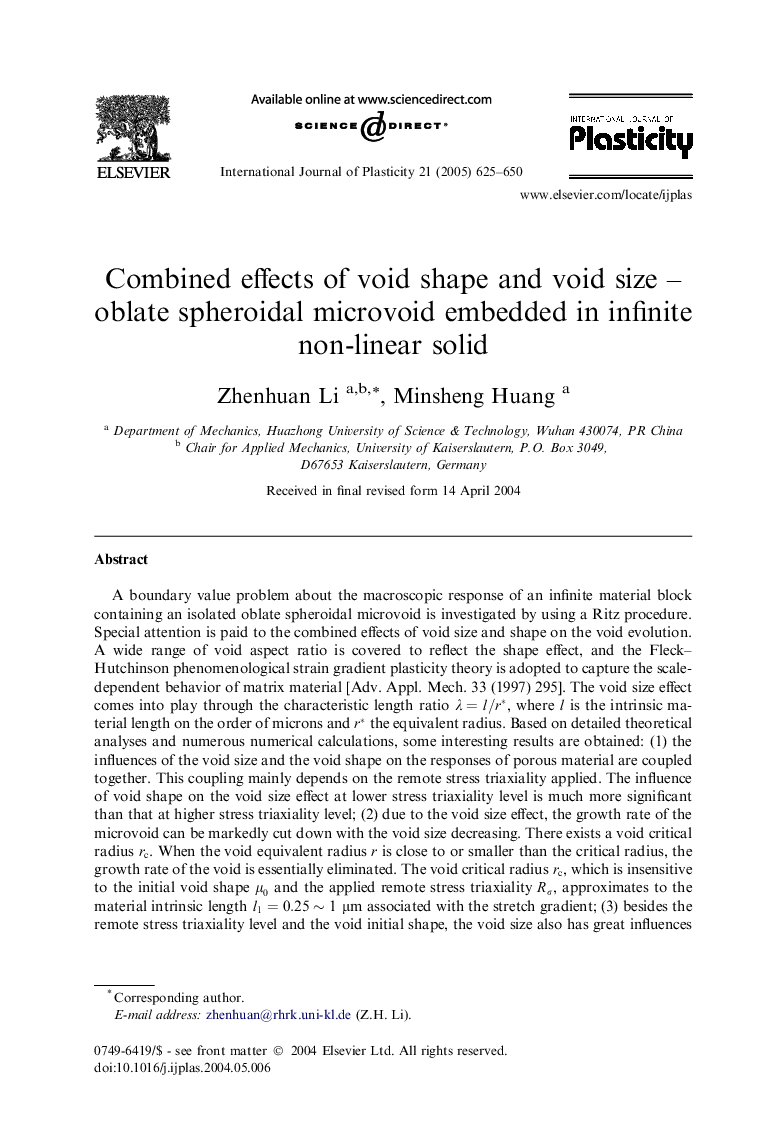| Article ID | Journal | Published Year | Pages | File Type |
|---|---|---|---|---|
| 9707248 | International Journal of Plasticity | 2005 | 26 Pages |
Abstract
A boundary value problem about the macroscopic response of an infinite material block containing an isolated oblate spheroidal microvoid is investigated by using a Ritz procedure. Special attention is paid to the combined effects of void size and shape on the void evolution. A wide range of void aspect ratio is covered to reflect the shape effect, and the Fleck-Hutchinson phenomenological strain gradient plasticity theory is adopted to capture the scale-dependent behavior of matrix material [Adv. Appl. Mech. 33 (1997) 295]. The void size effect comes into play through the characteristic length ratio λ=l/r*, where l is the intrinsic material length on the order of microns and r* the equivalent radius. Based on detailed theoretical analyses and numerous numerical calculations, some interesting results are obtained: (1) the influences of the void size and the void shape on the responses of porous material are coupled together. This coupling mainly depends on the remote stress triaxiality applied. The influence of void shape on the void size effect at lower stress triaxiality level is much more significant than that at higher stress triaxiality level; (2) due to the void size effect, the growth rate of the microvoid can be markedly cut down with the void size decreasing. There exists a void critical radius rc. When the void equivalent radius r is close to or smaller than the critical radius, the growth rate of the void is essentially eliminated. The void critical radius rc, which is insensitive to the initial void shape μ0 and the applied remote stress triaxiality RÏ, approximates to the material intrinsic length l1=0.25â¼1μm associated with the stretch gradient; (3) besides the remote stress triaxiality level and the void initial shape, the void size also has great influences on the evolution of void shape. These results are significant to understand the evolutions of microvoid on the order of micron or sub-micron.
Related Topics
Physical Sciences and Engineering
Engineering
Mechanical Engineering
Authors
Zhenhuan Li, Minsheng Huang,
